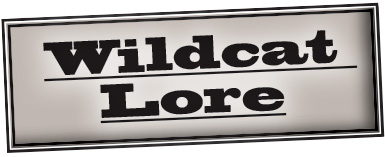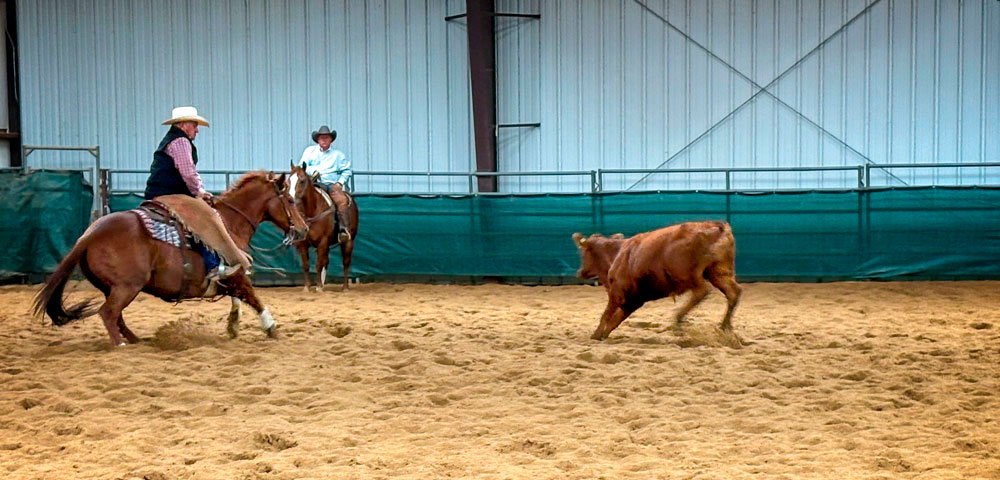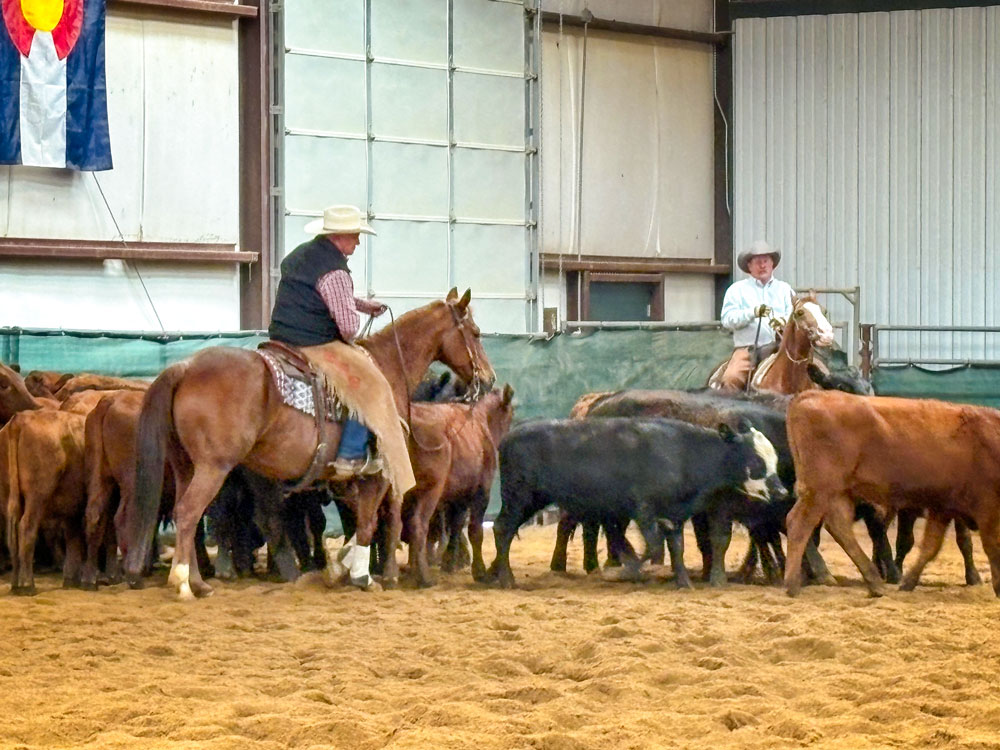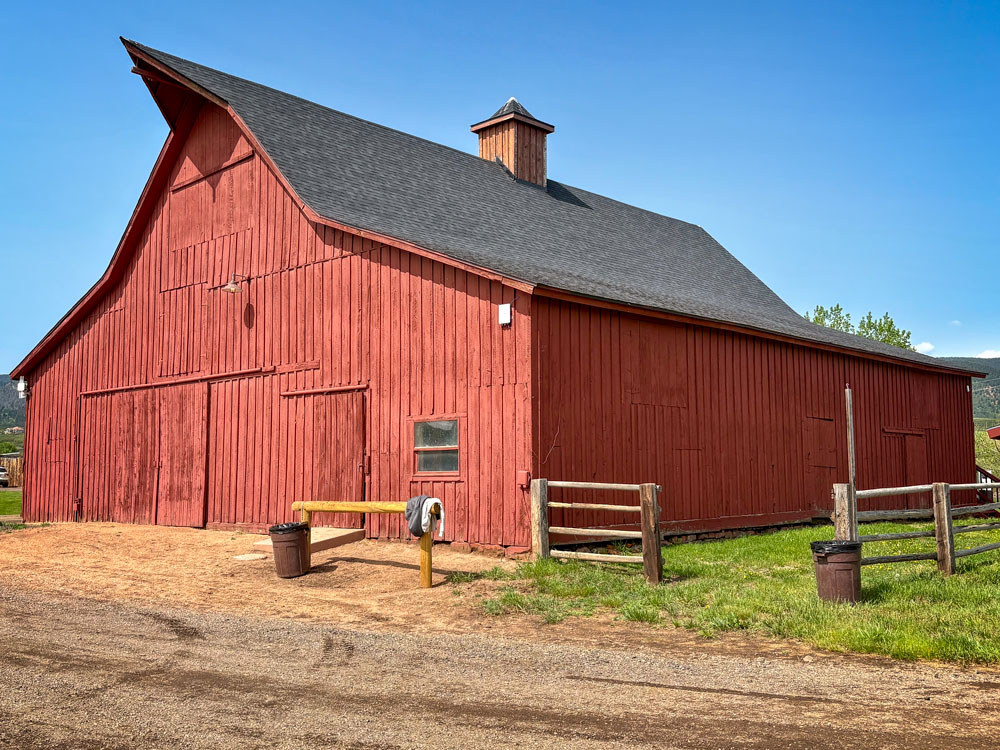Ranchers and cowboys: Douglas County trademarks


A cowboy on his cutting horse forcing a yearling in the right direction.
In May, the Wiens Ranch in south Sedalia hosted a cutting horse competition, reminding us that ranching was and remains significant to the economic welfare of Douglas County.
William Newlin of Parker is credited with bringing Shorthorn cattle from Minnesota into Douglas County in 1862. The term of art is ranging, i.e., cattle ranged on some 1,750 acres in Parker. Down south, sons of Sarah Coberly (proprietress of the hotel, Coberly Halfway House) began running cattle in 1888 from Perry Park (northwest of Larkspur) to Littleton.
In the County’s east, farmer, lumberman and later politician Jacob Schultz got into the business in 1870 on his 2,500-acre property near Franktown. Green pastures offered ideal conditions as well and, over time, a banker named Alvin Kountz developed a cattle company with 20,000 acres managed by I.J. Noe. By the 20th century, there were more than 450 ranches featuring Galloway, Hereford and Shorthorn breeds. Herds ran in size from 20 to 10,000 head.
What made Douglas County ideal early on were the two railroads crisscrossing the area, minimizing the distance required to ship cattle to market. It is confirmed by noticing the many cattle chutes dotting the area, many quite close to railroad lines.
Ranching is, at first sight, glamorous. Real estate statistics indicate there are still opportunities to acquire Colorado ranchland of 700,000 acres with asking prices aggregating $2 billion. But if you want in, ensure you are well-informed—working a ranch is anything but glorious.
Enter the cowboy. A cowboy’s clean-cut, robust image in movies and television sells well, as do chaps, belt buckles and all manner of leather gear, saddles included. Yet, on the job, things are a bit less picturesque. In fact, the profession is especially challenging, dirty and dangerous.
The dynamic duo in ranching is that combination of horse and cowboy with the skills necessary for rounding up and moving herds. To properly feed cattle requires up to 16 acres of good grazing land per head and rotational grazing. Separating (cutting) one individual head from the herd for branding or special care, checking for illness and administering medicine is also part of the job. The sport of rodeo developed to highlight key talents in cowboys and their horses.
In attending the Wiens competition, it was clear that Douglas County folks today are still in a stronghold of that western, American ranching and cowboy spirit.

Cattle remain a critical part of Colorado’s ranching culture.

A 19th century barn without nails at Wiens Ranch in Sedalia, built by shipbuilder John Roner using hardwood morticed joints and pins.
Article and photos by Joe Gschwendtner